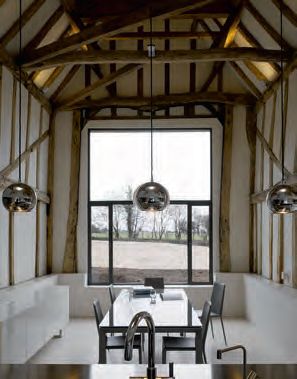PLANNING ESSENTIALS LAWFUL DEVELOPMENT C ERTIFICATES
If you want certainty on whether your proposed scheme – or a past project – is sanctioned under the planning rules, then an LDC could be the best option. Mike Dade reveals what’s involved
Mike Dade

An LDC can be a useful document to have when you come to sell your home, as it demonstrates to buyers and their representatives that projects were sanctioned. This extension by Mustard Architects (
www.mustardarchitects.com) has helped to form a bright, open plan kitchen-diner. Left: Original details make striking features in this barn conversion by Hudson Architects (
www.hudsonarchitects.co.uk). If you’re buying a property of this nature, it’s vital to ensure that the proper consents are in place
Some of the most popular home building projects involve works that can be completed without the go-ahead from the planners. Perhaps the scheme counts as permitted development (PD, a type of preauthorised work) – or maybe it doesn’t need any formal approval at all. The trouble is it’s not always easy to tell where the lines are drawn.
That’s where lawful development certificates come in (also known as LDCs and as certificates of lawfulness). As the name suggests, they provide a way for you to get the council to determine whether an existing building and its use, or a proposed future development, is lawful. So, let’s take a look at why they’re useful, when it’s necessary to apply for them and how to go about it.